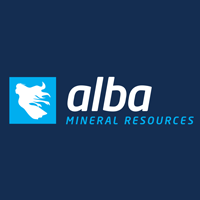Alba Mineral Resources plc (AIM: ALBA) has told DirectorsTalk that it has completed a detailed gravity survey and soil sampling programme on its 100% owned prospecting licence (PL3824) in County Limerick in the Republic of Ireland.
The objective of the Survey is to identify possible structural targets with associated gravity variations and soil geochemistry anomalies that may be associated with the concentration of base metal mineralisation, notably zinc and lead.
Alba’s contractor has now demobilised from site and the detailed results of the Survey are being processed and analysed prior to expected release within the next few weeks.
Highlights
-- Survey completed over a total area of 400 ha.
— 240 gravity stations measured and the results from each station have now been sent to Alba’s consulting geophysicist for detailed analysis.
— 277 soil samples taken. Following initial analysis by portable XRF, anomalous samples to be dispatched to laboratory for detailed multi-element analysis.
-- Survey objective is to identify new structural targets for drilling.
Survey details
The soil sample and gravity survey were completed over the same area with sample/station spacing of 100 m and a line spacing of 150 m. Gravity data was recorded using a Scintrex CG-5 gravity meter, with topographical data collected using a VRS (Virtual Reference Station) GPS system. Soil samples were collected from a depth of 30-40 cm within the B soil horizon. Field work was carried out by experienced staff from Aurum Exploration Services.
Photographs and maps from the Survey will shortly be available on the Company’s website.
Previous work undertaken to date at Limerick
Alba’s work to date on prospecting licence PL3824 has consisted of geological mapping, shallow soil geochemistry, lithogeochemistry, VLF geophysics and drilling. Alba’s joint venture partner from 2010 to 2014, Teck Ireland, undertook a microgravity study on the central part of the licence, and completed four diamond drillholes.
The four diamond drill holes (totalling 956.7 m) were drilled in 2012. The holes were drilled to test the stratigraphy of the licence and the mineral potential within Lower Carboniferous limestone close to younger mafic lavas and intrusions (as present at the Stonepark project 9 kilometres to the north). Drillhole TC-3841-3 intercepted 6 metres of semi-massive and disseminated pyrite between 508 and 514 metres within the target limestone. A 2 metre mineralised interval within the aforementioned interval contained 0.58% Zn, and trace amounts of lead (208 ppm). The presence of pyrite is encouraging since it often indicates the presence of base metal sulphides at other properties in the Limerick basin.
As announced on 26 July 2016, Alba’s 100% owned prospecting licence (PL3824) was renewed to 26 May 2018 and covers Base Metals, Barytes, Gold and Silver.
Mike Nott, Alba’s CEO, commented: “We are pleased to report the completion of the current work programme on our Limerick project, and eagerly await the processing and interpretation of the data collected.”
“The geology of the Pallas syncline in Co. Limerick is highly prospective for zinc and lead mineralisation as exemplified by the discovery of Glencore’s Pallas Green project and Teck Ireland’s Stonepark project. We hope the results of our current exploration programme will identify additional mineralisation and lead to additional drilling on PL3824.”
Glossary
Gravity surveys: a process that measures minute variations in gravity. Gravity at every point on the surface of the earth varies slightly depending on distance from the equator and density of the underlying rock. A gravity survey is designed to pick up density variations below the surface. The ability for rock density to be detected using gravity variations is the basis for the use of gravity surveys in mineral exploration. Gravity variations provide an insight into different rock types and geological structures that are otherwise hidden.
Soil sampling: a process of defining the location and shape of an obscured mineralised structure and to identify any higher grade sections within the structure. Once collected, samples are submitted to a laboratory for analysis along with instructions as to the suite of elements to be analysed and what the detection limit should be.
XRF: X-ray fluorescence. The use of hand-held spectrometers allows the user to make on-site geochemical analysis of mine face, drill core or prepared samples, in order to identify quickly whether or not a geochemical anomaly is being detected during the programme. XRF spectrometers are designed to give an immediate on-screen read-out of the presence and grade of mineralisation within a tested sample.


